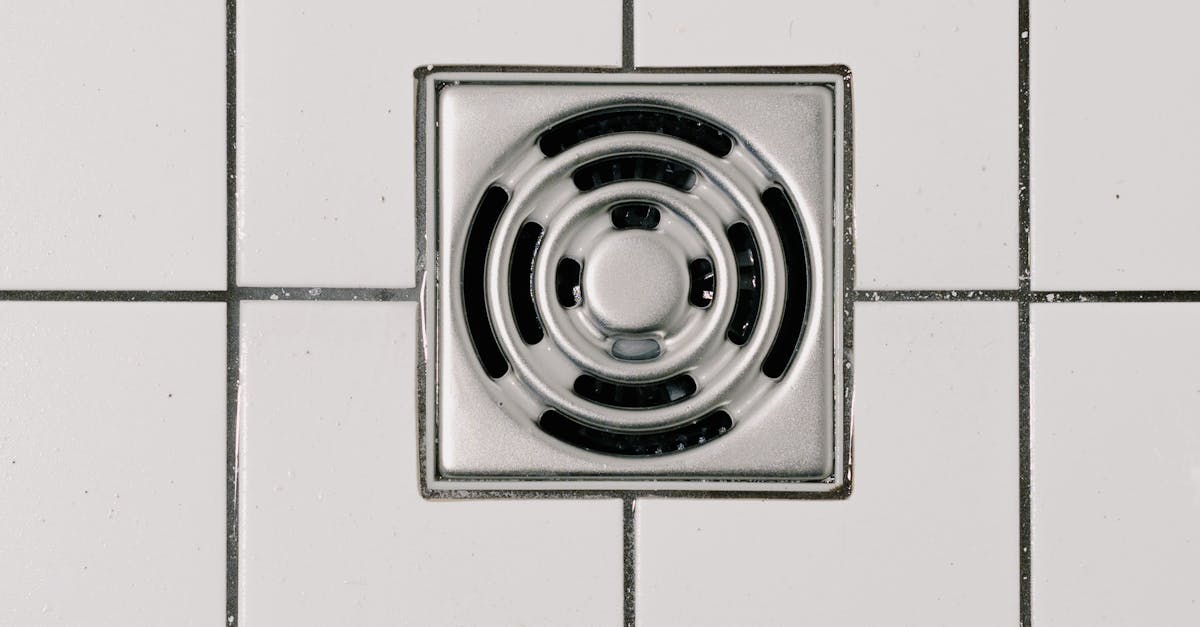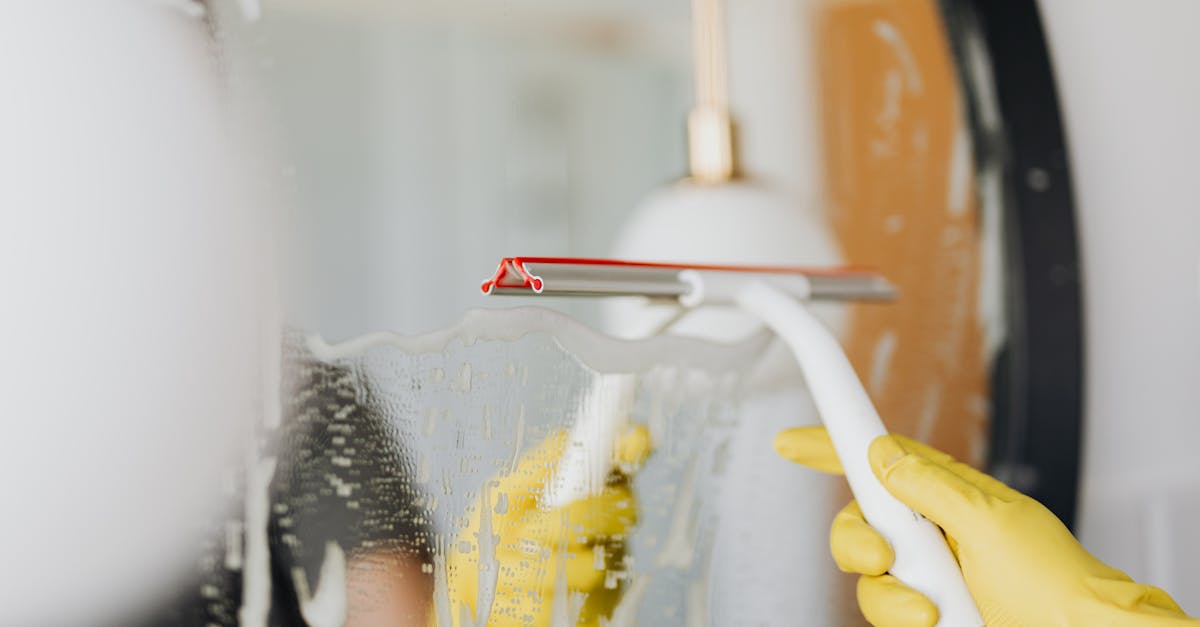
Table Of Contents
Environmental Considerations for Sink Replacement
When considering the environmental impact of sink replacement, it is essential to evaluate the materials used in the sink's construction. Opting for sustainable materials can significantly reduce the carbon footprint associated with production and disposal. Many sinks are made from natural stone, recycled materials, or eco-friendly composites that not only perform well but also minimise environmental damage. Consumers should seek products that adhere to environmental standards and come from responsible sources.
Moreover, the process of sink installation and repair can also contribute to sustainability efforts. Effective installation techniques can extend the lifespan of a sink, reducing the need for frequent replacements. Proper maintenance and timely repairs can prevent premature disposal and help conserve resources. Evaluating the full lifecycle of a sink promotes environmentally conscious decisions, aiding in the reduction of waste while ensuring functionality and style.
Choosing EcoFriendly Materials
When selecting materials for a sink, eco-friendly options significantly impact both the environment and your home's sustainability. Materials such as recycled stainless steel, bamboo, and composite stone are not only durable but also reduce the demand for raw resources. These choices often come with the added benefit of lower energy consumption during manufacturing processes. Additionally, opting for low-VOC (volatile organic compounds) finishes can improve indoor air quality, contributing to a healthier living space.
Sink installation and repair should involve careful consideration of the materials used, as their longevity plays a crucial role in reducing waste. Choosing eco-friendly materials not only enhances the aesthetic appeal but also ensures that your sink remains functional for years to come. By investing in sustainable options, homeowners can minimise the environmental impact while enjoying the performance and beauty of their sinks.
Popular Sink Styles and Their Lifespan
Different sink styles exhibit varying lifespans influenced by their materials and usage. Stainless steel sinks are known for their durability, often lasting 15 to 30 years with adequate care. Composite sinks, which combine materials like resin and stone, generally enjoy a lifespan of around 10 to 15 years. Above all, the environment they are placed in, such as kitchens or bathrooms, plays a significant role in determining how long a sink will endure.
When considering sink installation and repair, homeowners should be aware of aesthetic trends and practical needs. For example, while farmhouse sinks can offer a rustic charm, they may require more maintenance due to their open design. In contrast, undermount sinks provide a sleek look and are easier to clean, potentially extending their usability. These factors contribute not only to the overall lifespan of the sink but also affect the decision-making process during renovations.
Understanding the Lifespan of Various Designs
Different sink designs come with varying lifespans, heavily influenced by the materials used and maintenance practices. Stainless steel sinks are popular for their durability and resistance to heat, boasting a lifespan of around 15-30 years. Ceramic sinks, while aesthetically pleasing, can chip or crack, typically lasting between 10-20 years. Composite sinks, blending materials, offer resilience and modern design options, with a lifespan often exceeding that of ceramic. Regular maintenance can significantly prolong their usability.
When considering sink installation and repair, it is important to understand the implications of materials and design choices. Farmhouse sinks may require more significant plumbing adjustments due to their unique depth and size. In contrast, undermount sinks integrate well with counter surfaces but can be more prone to damage if not properly installed. Ultimately, aligning sink selection with your renovation goals and lifestyle needs ensures a functional investment that stands the test of time.
Impact of Kitchen and Bathroom Renovations
Renovating a kitchen or bathroom often sparks the decision to replace an old sink. The visual aesthetic and functional efficiency of a new sink can significantly enhance the overall appeal of the space. During renovations, homeowners may find it beneficial to upgrade to a more modern design or a vessel that complements new cabinetry. Careful consideration of sink installation and repair is crucial, as it can impact both the overall timeline and budget of the renovation project.
Timing is essential when coordinating sink replacement with other upgrades. Choosing to replace the sink simultaneously with cabinetry or countertop installations may streamline the process, ensuring everything fits perfectly. On the other hand, addressing sink issues separately could complicate matters or result in additional costs down the line. Proper planning can lead to a harmonious blend of style and functionality, making the renovation process both efficient and enjoyable.
Timing Your Sink Replacement with Other Upgrades
When planning a renovation in either the kitchen or bathroom, it’s essential to consider how sink installation and repair fit into the overall project timeline. Often, homeowners will choose to replace sinks alongside other upgrades like cabinetry, countertops, or flooring. This can create a more cohesive look and optimises the renovation process by ensuring that all elements are coordinated. Planning these changes together helps avoid the hassle of restaging elements or causing damage to new installations.
Timing your sink replacement with other upgrades can also lead to cost savings. By tackling multiple projects simultaneously, you can often negotiate better rates with contractors due to the larger scope of work. This approach not only reduces disruption but also allows for a more efficient use of materials and labour. Hence, synchronising your sink replacement with broader renovations ensures a smoother process and can enhance the overall aesthetic of your space.
FAQS
How often should sinks be replaced?
Sinks typically need to be replaced every 10 to 15 years, depending on the material, usage, and maintenance.
What factors can affect the lifespan of a sink?
Factors include the sink's material, frequency of use, maintenance practices, and exposure to harsh cleaning chemicals.
Are there eco-friendly options for sinks?
Yes, there are various eco-friendly sink materials available, such as recycled glass, stainless steel, and sustainably sourced wood.
How do kitchen renovations influence sink replacement timing?
If you're renovating your kitchen, it's a good opportunity to replace your sink, especially if it no longer matches your new design or is showing signs of wear.
What are the signs that a sink needs to be replaced?
Signs include visible damage like cracks or chips, persistent leaks, rust, or if the sink no longer fits with your overall decor style.





























